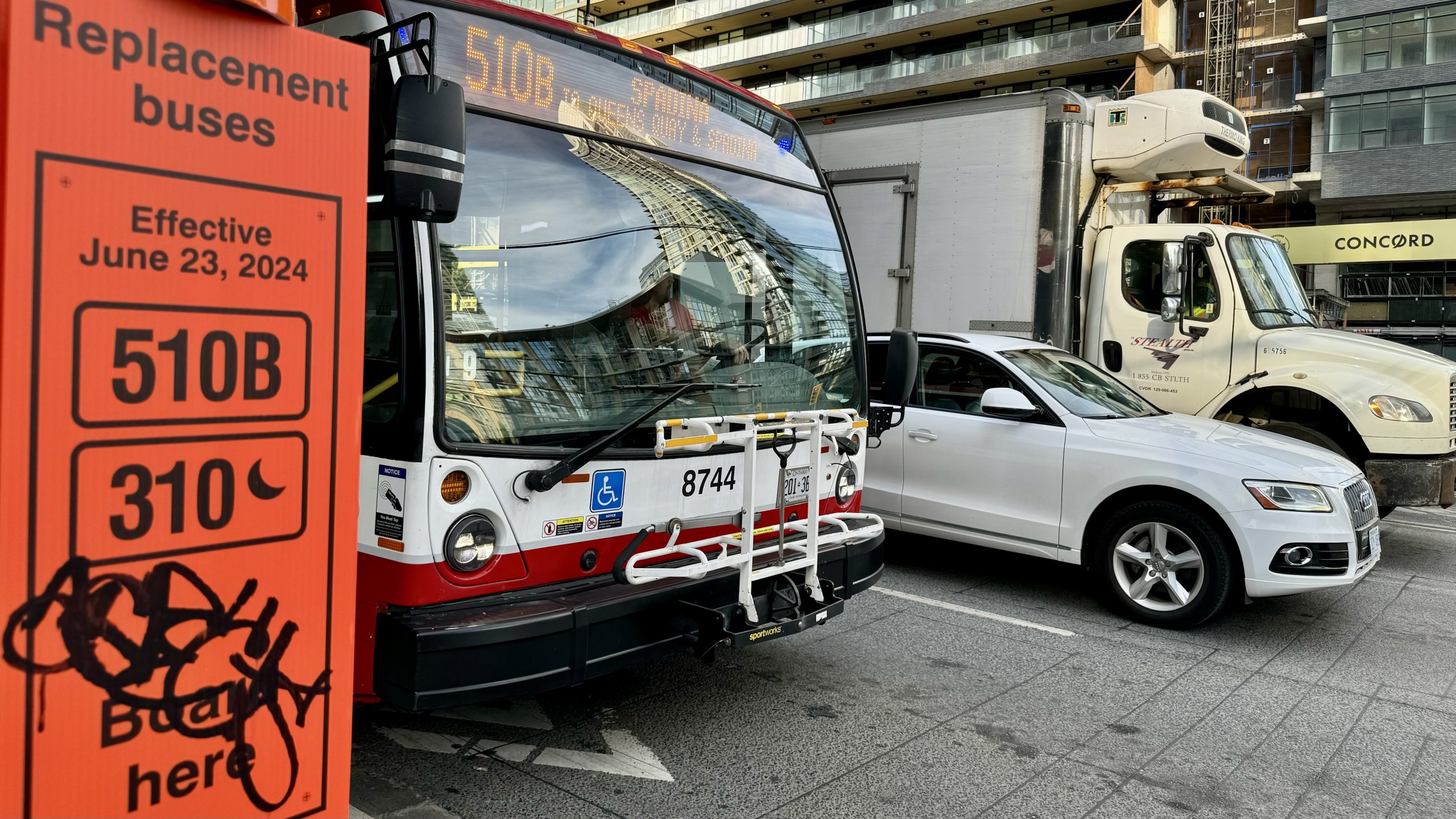Travel
Toronto says traffic congestion is improving. Is it?

The City of Toronto is out with new data that officials say proves its measures to improve traffic congestion in some key areas are working.
The focus points include Spadina Avenue’s temporary bus lane, the left turn from Lake Shore Boulevard onto Spadina Avenue, the King Street Transit Priority Corridor, and the Liberty Village Traffic Action Plan.
The temporary bus lane on Spadina Avenue was installed between Richmond Street and Lake Shore Boulevard in June to improve traffic flows, transit reliability, and cyclist safety. During the work, the Toronto Transit Commission (TTC) has been operating buses instead of streetcars on this stretch.
The city says thanks to traffic agents and Toronto Police Service (TPS) officers, southbound bus travel times between Dundas Street West and Lake Shore Boulevard during the afternoon peak period (3 to 7 p.m.) have been reduced by up to 40 minutes (from 56 minutes at its peak to as quickly as 16 minutes).
The temporary bus lane will remain intact until December.
City says travel time on Gardiner Expressway has been reduced
The left turn from Lake Shore Boulevard onto Spadina Avenue was introduced last month to alleviate traffic congestion on the Gardiner Expressway during rehabilitation work on the section between Dufferin Street and Strachan Avenue.
Before this, drivers could only turn north onto Spadina Avenue if they remained on the Gardiner. The city says the new left turn is a helpful alternative for motorists, with data indicating they can save up to 10 minutes in travel time between the Jameson Avenue and Spadina Avenue exits.
The city says travel times on the Gardiner have decreased by five to 18 minutes due to the lower traffic volume.
From mid-April to mid-2027, the Gardiner was to be reduced to two lanes in each direction between Dufferin and Strachan, with intermittent additional lane closures as required.
The city initiated the King Street Transit Priority Corridor to improve transit travel times along King Street while construction work on Adelaide Street was completed.
The city says the travel times are consistent with those announced earlier this year (28 to 44 minutes faster between University Avenue and Jarvis Street compared to peak travel times in 2023). The city noted that the percentage of driving violations through intersections also remained 60 per cent lower throughout 2024 compared with December 2023.
City touts Liberty Village traffic plan months after residents voice concerns
In July, some residents of Liberty Village said they feel trapped because traffic conditions have gotten so bad that it takes drivers a minimum of 30 minutes to get in and out of the downtown neighbourhood, with many calling it unberable.
Residents pointed to chaos on the roads as a direct result of concerts, sporting events, and various road closures, which made matters worse. Mitigation efforts include deploying traffic agents and traffic control personnel.
On Thursday, the city said officials and TTC representatives completed watermain and streetcar track replacement work on King Street between Dufferin Street and Strachan Avenue 10 weeks ahead of schedule, “enabling this key corridor to fully reopen to motor vehicles and transit.”
The city says it will continue to have traffic agents in Liberty Village and Paid Duty Officers at key intersections during sporting events at BMO Field.
Traffic cameras at Strachan Avenue/Wellington Street West intersections and Dufferin/Liberty Streets will also be installed so city traffic engineers can adjust real-time signal timing to improve traffic flows.
Traffic agents are essential, city claims
The city says the presence of traffic agents deployed at intersections has greatly alleviated roadway issues and congestion.
The city says traffic agents eliminate instances of vehicles blocking intersections 96 per cent of the time and reduce travel time by up to 33 per cent. They also help decrease the risk of collisions or near misses between vehicles, cyclists and pedestrians.
“Box blocking” or “blocking the box,” an ongoing issue in Toronto, happens when vehicles enter an intersection or box junction but cannot clear it before light or traffic conditions change. This often results in cars being stuck in the intersection, obstructing traffic flow and worsening gridlock.
The city will provide an update on its Congestion Management Plan to council in October.









